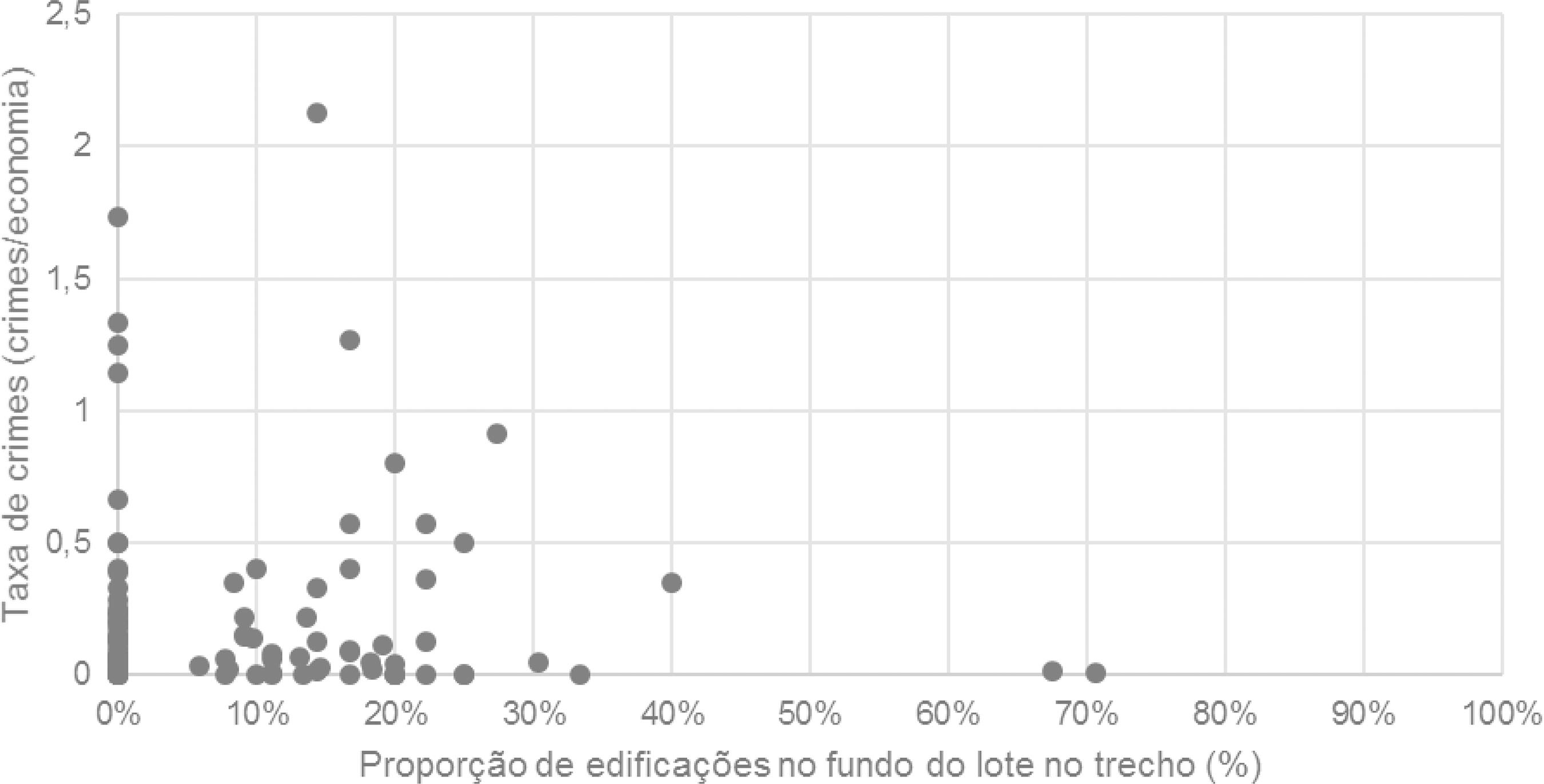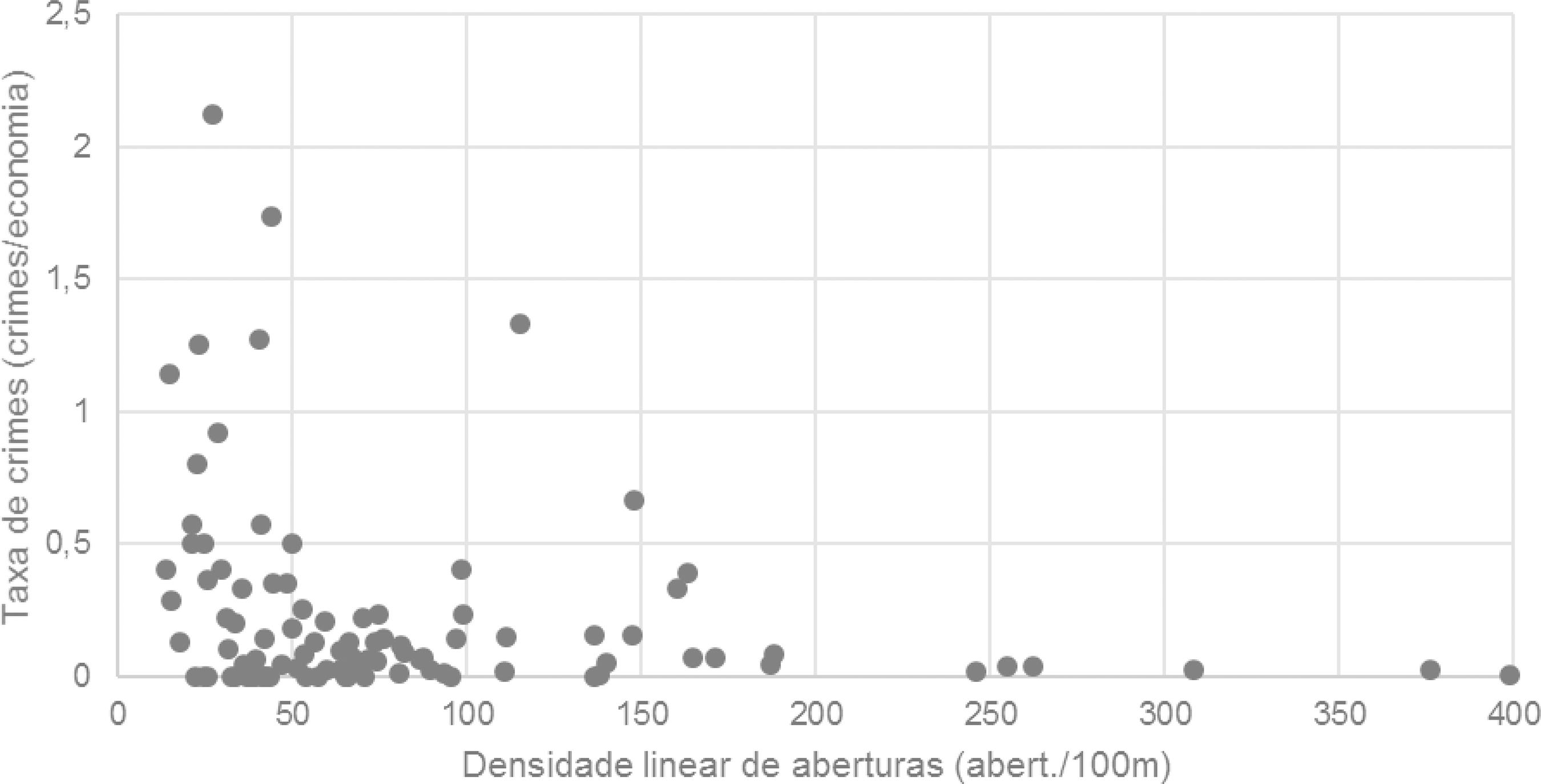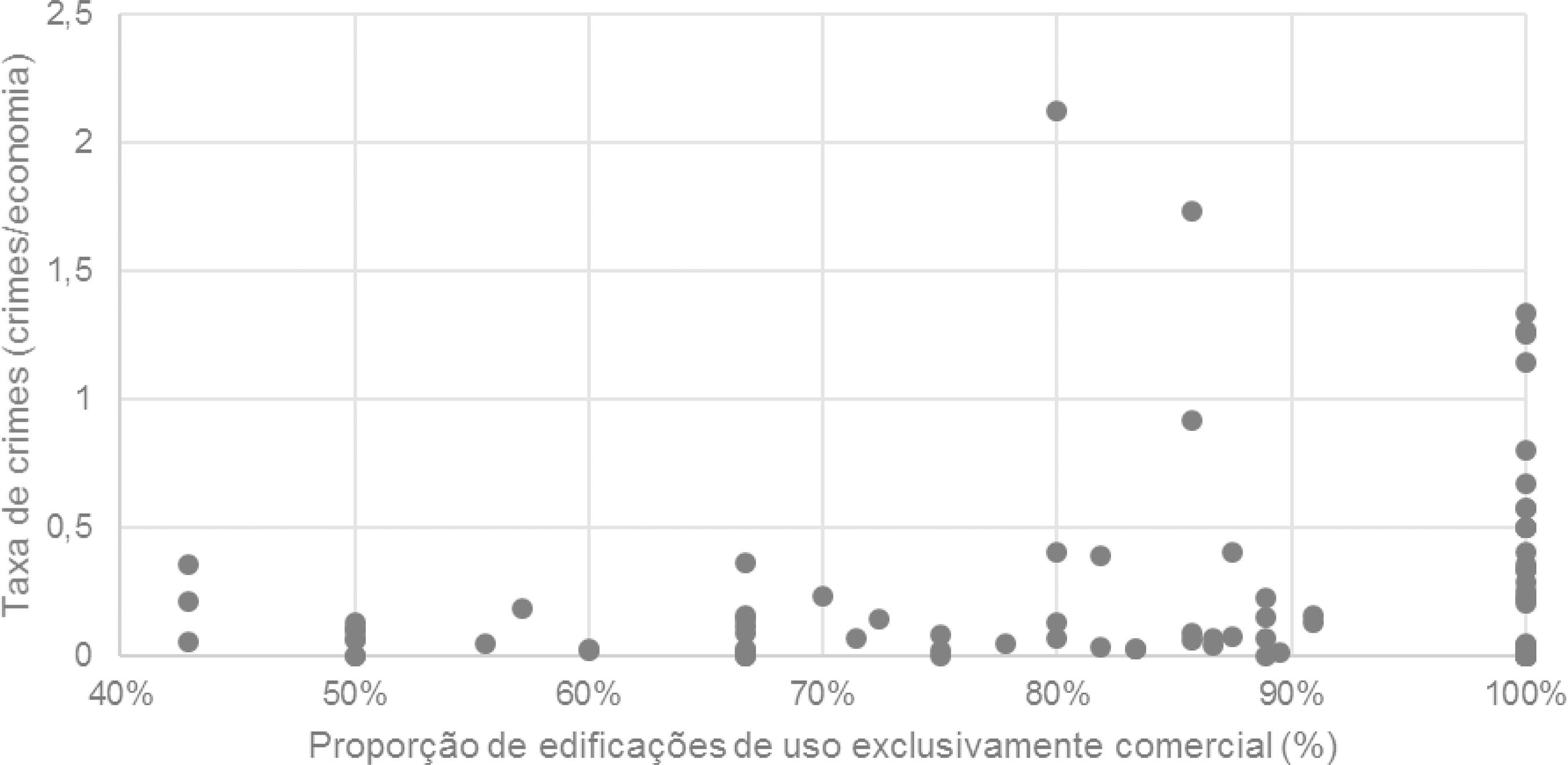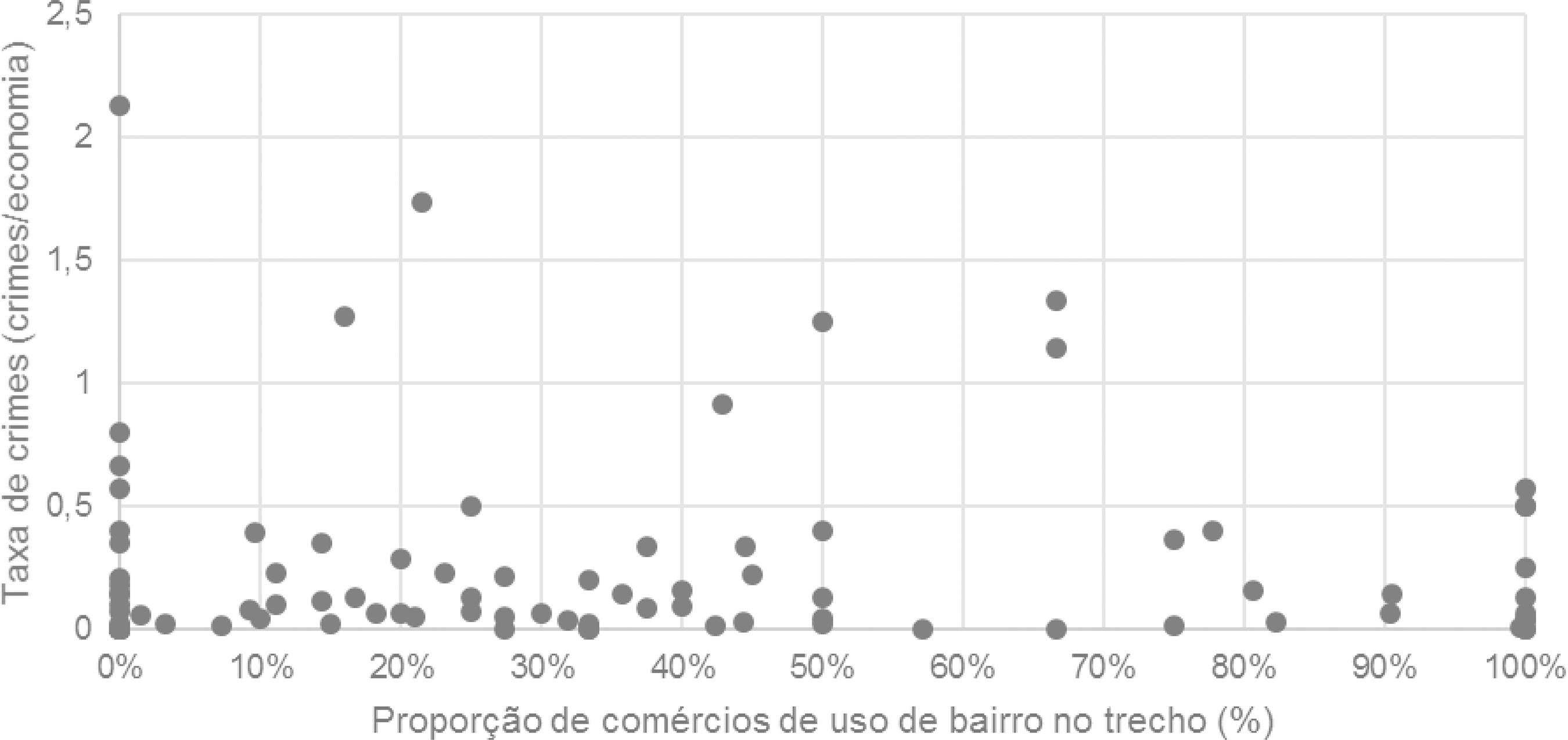Abstract
Although empirical studies strongly suggest that commercial activities are associated with higher crime rates, they do not consider whether there is any difference in the effects of isolated commercial activities, as opposed to those integrated to residential activities in the same building, and neither do they differentiate between non-residential activities in the immediate neighbourhood, in the district and city-wide. Thus, we investigated if non-residential activities in the conurbated area of Florianópolis (FCA) may be considered criminogenic even when they are integrated with residential activities in mixed buildings, and also whether different catchment areas could explain higher or lower crime rates. With that purpose, we randomly selected a sample of 100 street segments and compared their architectural and land use characteristics to crime rates. The results showed that isolated commercial use is associated with higher crime rates, whereas buildings with combined commercial and residential uses are not. The evidence also suggested that city-wide non-residential activities are criminogenic whereas those at the neighbourhood and district level do not show any association one way or another, and that higher densities, usually linked to verticalisation, were associated with lower crime rates.
Keywords:
Architectural form; Commercial activities; Neighborhood retail; Mixed buildings; Crime occurrence

 Fonte: Censo Demográfico (
Fonte: Censo Demográfico ( Fonte:
Fonte: 




















